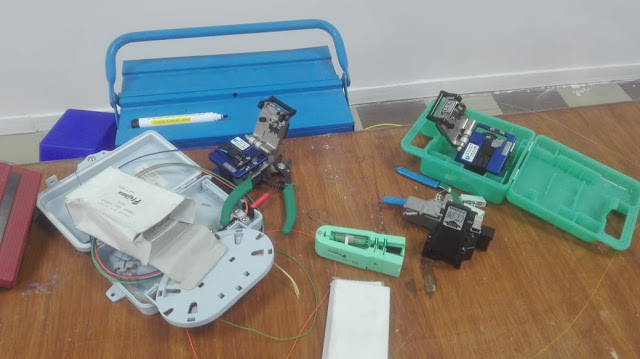I was a trainee (3, Jul 2021 till 12, Aug 2021) at Telecom Egypt Miami Exchange in Alexandria, Egypt. I learned about the following:
1- Overview of Communication of Coastal Stations and Ships Distress.
2- Introduction to Optical fiber cables, their structure, how they're connected underground, how to splice them using "Fusion Splicing", and how to measure them using "4 in 1 OTDR".
3- Introduction to "FTTH" networks, their structure, and how the optical fiber cables are connected from Telecom Egypt exchanges to clients.
4- Introduction to Telecom Egypt traffic devices especially PCM, WDH, SDH, WDM, how voice calls and traffic is conveyed through exchanges reaching the client, and different topologies that Telecom Egypt uses to connect exchanges.And (here), I've written an article on my blog, demonstrating the concepts that I've learnt in details. Besides the skills that I've learnt. This article doesn't contain all the information that was comprised during the training, but most of them, and that's because not all of those information are related to the core curriculum of the training.
Splicing equipment (stripper, cleaver and a small Optical Distribution Frame)
a small Optical Distribution Frame
This is a simulation of an underground splicing room
MSAN Cabinet which have Optical input and Copper output
This was inside the switch room in the exchange, which is comprised of lots of convoluted design and sophisticated devices, like the carts, the matrix, etc..
"the above picture shows some Presynchronous Digital Hierarchy system".
Gigabyte Passive Optical Network Cabinet for simulation, it consists of two Optical Distribution Frames, one takes the input and the other for the output. Note, It's all for simulation, but in reality a cabinet like this can contain more than input Optical Distribution Frame and like wise when it comes to the output.
These also are Optical Distribution Frames but they are used for connecting the devices in the switch room to cables going to clients using "Pig Tails".
Here's another small Optical Distribution Frame.
Wall Mount Box, Copper on the left vs. Optical on the right.
a Splicer and a Cleaver.
Copper cables VS. Optical Fibre cables inside the splicing room.
At the end, it was a wonderful experience there to have, as I've got to know great people, with a very open and good way of thinking, and it was really a privilege to deal with them and I'd love really to have another experience there at any occasion. And as we all know any device has an attenuation between the input and the output, I also had when I decided to blog what I've learnt, in other words, I didn't mention all the material I've experienced and there were lots of interesting stuff that I've forgotten so far.
Thank you, written by Mostafa Saleh.















No comments:
Post a Comment